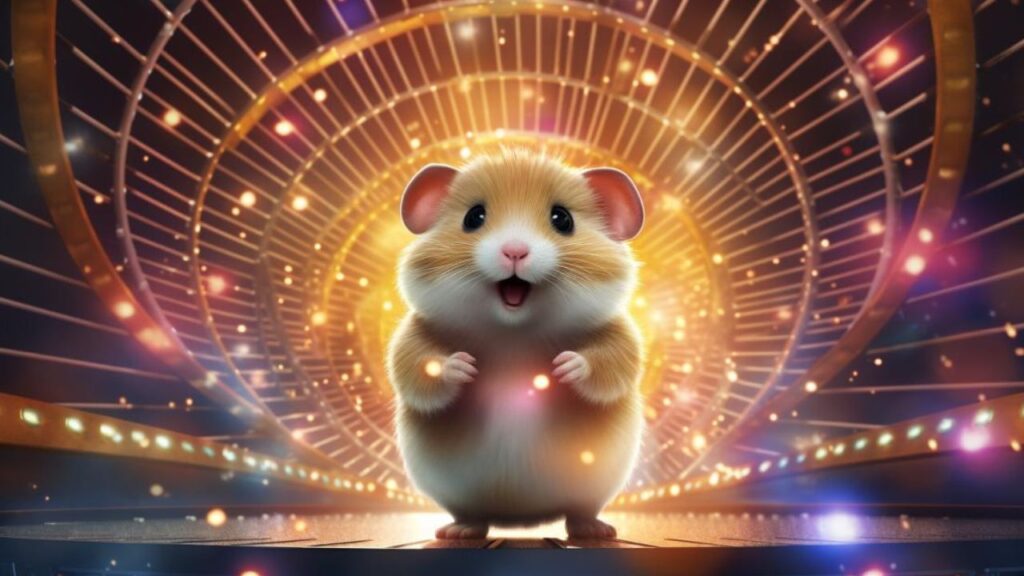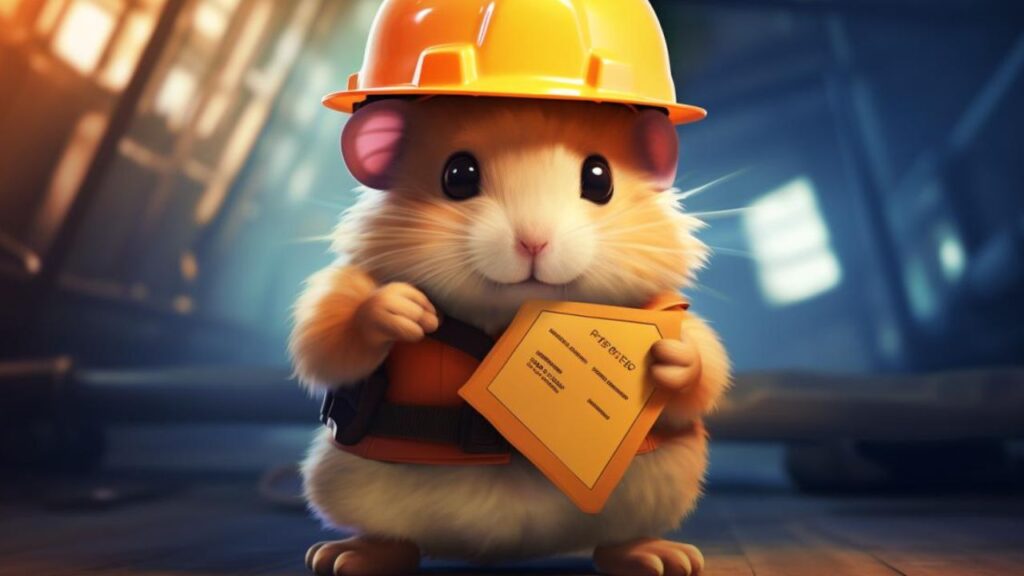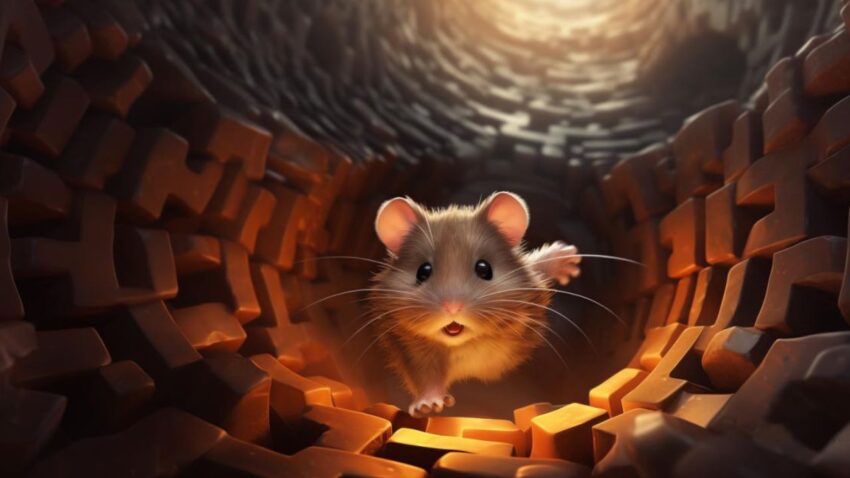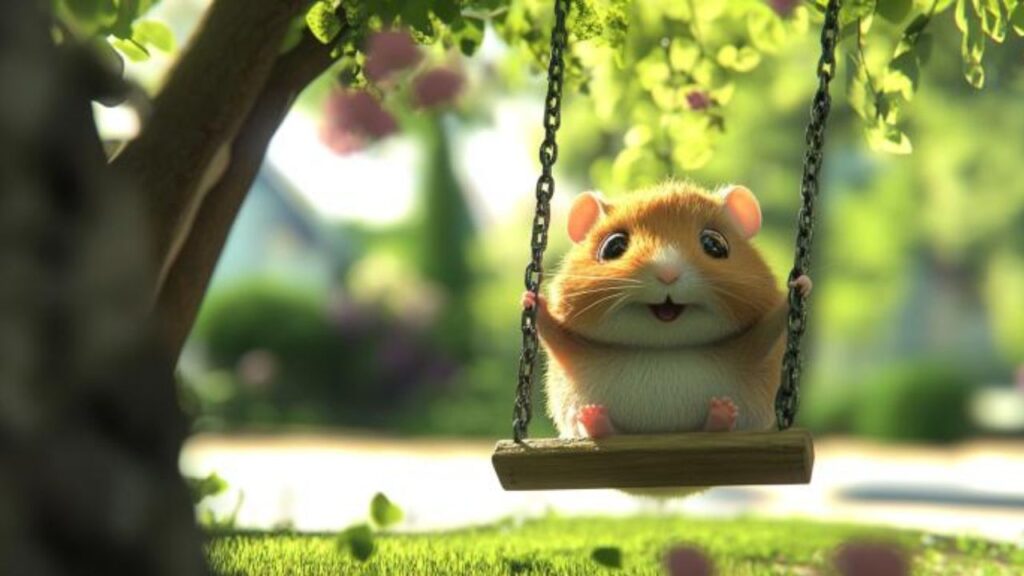Hello, hamster enthusiasts and curious minds alike! It’s Hannah Hammie here, your friendly neighborhood hamster expert, ready to shine a light on a delightful and stimulating activity for your furry friend. Today, we’re exploring the fascinating world of training your hamster to follow a light – a fun game that’s not just entertaining but also a fantastic way to engage your hamster’s mind, especially during those quiet evening hours.
Imagine this: the sun has set, the stars are twinkling, and while most of the world is winding down, our nocturnal pals are just getting started. Hamsters, with their night-loving nature, are always on the lookout for something intriguing to do after dark. This is where light training comes into play, offering an engaging and mentally stimulating exercise that perfectly suits their evening energy spikes.
Training your hamster to follow a light isn’t just a whimsical pastime; it’s a brain-boosting activity that taps into their natural curiosity and agility. It’s about creating an interactive experience that enhances their evening routine, bringing excitement and a new dimension to their playtime. Plus, it’s a fantastic way for you to bond with your little buddy, building trust and understanding as you guide them through this luminous adventure.
So, grab your flashlight or laser pointer, dim the lights, and get ready to enter a world where you and your hamster can connect and have fun in a whole new way. It’s time to turn those dark evenings into sessions of light-filled joy and learning!
Shining a Light on Hamster Behavior

When it comes to understanding our little hamster friends, their behavior, especially around light, can be quite intriguing. As nocturnal beings, hamsters have a unique relationship with light and darkness. Let’s illuminate the specifics of how hamsters perceive light, the importance of mental stimulation, and why light training is an effective and enjoyable activity for them.
How Hamsters Perceive Light
Hamsters, though not possessing the sharpest eyesight, have a fascinating way of interacting with their environment through light:
- Night Vision: Hamsters have relatively poor vision. However, they are adapted to low-light conditions, making them more active and comfortable during dusk and dawn. Their eyes can detect movement and light changes, which helps them navigate in the dark.
- Sensitivity to Light: Bright lights can be overwhelming for hamsters. They prefer dim or twilight-like conditions. This is why light training, especially with a soft and gentle light source, is well-suited to their natural preferences.
- Color Perception: Research suggests that hamsters can perceive some colors, though not as vividly as humans. This ability can play a role in how they interact with light, possibly discerning different shades or intensities.
The Benefits of Mental Stimulation in Hamsters
Mental stimulation is as crucial for hamsters as it is for any other pet:
- Preventing Boredom: A hamster’s active mind requires regular stimulation to prevent boredom and stress. Engaging activities, like following a light, provide a fun challenge.
- Encouraging Natural Behaviors: Such activities mimic the mental engagement they would experience in the wild while foraging or exploring.
- Enhancing Overall Well-being: Regular mental stimulation contributes to a hamster’s overall well-being, keeping them happy, active, and healthy.
Why Light Training Works for Hamsters
Light training taps into several aspects of a hamster’s natural behavior and instincts:
- Curiosity and Exploration: Hamsters are naturally curious and love to explore. A moving light stimulates these instincts, encouraging them to investigate and follow.
- Reward-based Learning: Hamsters are quick learners, especially when rewards are involved. Associating the light with positive outcomes, like treats or gentle praise, makes the training effective.
- Adaptability to Training Routines: Despite their small size, hamsters can adapt well to routine training, including light following. This routine provides structure and a sense of security, enhancing their ability to learn and engage.
- Nocturnal Activity Alignment: Since hamsters are more active during the evening, light training aligns perfectly with their natural activity cycle, making it an ideal nighttime game.
Setting the Stage for Light Follow Fun

Before we embark on this luminous adventure with our hamster pals, it’s crucial to set the stage just right. This involves choosing an appropriate light source, creating a safe and comfy environment for training, and understanding our hamster’s nocturnal habits. Let’s dive into these preparatory steps to ensure our light follow sessions are both fun and fruitful.
Choosing the Right Light Source
Picking the perfect light source is key to a successful training session:
- Type of Light: A small flashlight or a laser pointer works best for this activity. They’re easy to handle and direct, making it simple to create intriguing patterns for your hamster to follow.
- Intensity and Safety: Ensure the light isn’t too bright or harsh. A soft, dim light is preferable as hamsters have sensitive eyes. Avoid shining the light directly into their eyes as this can cause discomfort or even harm.
- Consistency: It helps to use the same light source each time. Hamsters, being creatures of habit, will respond better to a consistent stimulus.
- Interactive Potential: Choose a light that allows you to create varied and interesting patterns on the floor. This keeps the training engaging and challenging for your hamster.
Creating a Safe Training Environment
Safety and comfort are paramount during training:
- Space: Clear a small area in a room where your hamster can safely explore. Remove any potential hazards like sharp objects or gaps where they could get stuck.
- Calm Atmosphere: Train in a quiet and calm environment. Loud noises or sudden movements can startle your hamster and hinder the training process.
- Secure Boundaries: If training outside the cage, ensure the area is escape-proof. Use barriers or a playpen to create a defined training space.
- Comfortable Flooring: Ensure the surface is comfortable for your hamster to walk on. Hard or slippery floors can be uncomfortable and might discourage them from participating.
Understanding Your Hamster’s Nighttime Activity Patterns
Aligning the training with your hamster’s natural activity cycle will yield the best results:
- Observation: Spend a few evenings observing when your hamster is most active. This will help you choose the best time for training sessions.
- Energy Peaks: Hamsters are usually most active during the evening and early night hours. Schedule your training sessions during these times when your hamster is naturally more energetic and alert.
- Consistent Schedule: Once you identify the best time, try to stick to a consistent schedule. Hamsters can adapt to routines, and a regular training time can enhance the learning process.
Guiding Your Hamster with Light: Step-by-Step

Now that we have our stage set for some nocturnal fun, it’s time to turn the spotlight on the main event: training your hamster to follow a light. This step-by-step guide will help you gently and effectively introduce this exciting game to your furry friend, ensuring each session is both rewarding and enjoyable.
Introducing Your Hamster to the Light
The first encounter with the light is crucial in setting the tone for future training:
- Initial Exposure: Start by letting your hamster observe the light from a distance. Turn on the light source and allow them to see it without directly interacting with it. This helps them get accustomed to the light without feeling overwhelmed.
- Short Sessions: Keep the initial sessions short. A few minutes is enough to gauge their interest and response without causing stress or fatigue.
- Observing Reactions: Pay close attention to how your hamster reacts. Curiosity or a cautious approach is a good sign, while skittishness or fear may mean the light is too bright or the session is too long.
- Consistency: Repeat this process for a few days, keeping the sessions short and sweet. This helps build familiarity and reduces any potential fear or anxiety.
Encouraging Movement and Exploration
Once your hamster seems comfortable with the light, it’s time to encourage some movement:
- Gentle Guidance: Use the light to gently guide your hamster across the floor. Start with simple, straight lines before moving on to more complex patterns.
- Reward System: Incorporate treats into the training. Place a treat at the end of the light trail to reward your hamster when they follow the light to its destination.
- Interactive Play: Make the light move in a way that encourages natural hamster behaviors like chasing or exploring. The idea is to make the training feel like a playful adventure.
- Patience and Praise: Always use positive reinforcement. Praise your hamster verbally or with gentle pets when they successfully follow the light.
Gradually Increasing the Challenge
As your hamster gets the hang of the basics, it’s time to up the ante:
- Longer Trails: Gradually increase the length of the light trail, encouraging your hamster to follow it further.
- Changing Patterns: Introduce different patterns like zigzags or circles. This not only keeps the training interesting but also stimulates your hamster’s cognitive abilities.
- Varying Speeds: Experiment with the speed at which you move the light. This helps improve your hamster’s reflexes and keeps them engaged.
- Regular Sessions: Consistent training ensures better learning. Regular sessions, even if they’re short, can significantly improve your hamster’s ability to follow the light.
Keeping It Safe and Enjoyable

While training your hamster to follow a light can be a source of great fun and bonding, it’s essential to prioritize their safety and comfort. Ensuring the experience remains a positive and healthy one is key to successful training. Let’s illuminate the aspects of safety, stress recognition, and balancing training with regular play.
Light Intensity and Safety
The type and intensity of the light used in training sessions are crucial factors for your hamster’s well-being:
- Avoid Direct Eye Contact: Never shine the light directly into your hamster’s eyes. This can be disorienting and potentially harmful to their vision.
- Appropriate Brightness: Use a light that is bright enough to attract your hamster’s attention but not so bright that it causes discomfort. Adjustable intensity can be very useful to find the perfect balance.
- Safe Distance: Maintain a safe distance between the light source and your hamster. This prevents any potential harm and makes the activity more enjoyable for them.
- Regular Breaks: Incorporate breaks during the training sessions to avoid overstimulation. This also gives your hamster a chance to rest and regroup.
Recognizing Signs of Stress or Discomfort
Being able to read your hamster’s cues is vital in ensuring their welfare during training:
- Behavioral Changes: Signs of stress can include excessive grooming, trying to escape, or avoiding the light. If you notice any of these behaviors, it might be time to take a break or end the session.
- Physical Signs: Watch for panting or lethargy, as these could indicate that the activity is too intense or stressful for your hamster.
- Appetite and Sleep Patterns: Changes in eating or sleeping habits post-training can also be signs of stress. It’s important to monitor these aspects to ensure the training isn’t negatively impacting your hamster.
Balancing Training with Regular Play
Training should be a part of your hamster’s routine, not the entirety of it:
- Variety in Activities: Along with light training, ensure your hamster has access to other forms of play and exercise, like running in their wheel, exploring tunnels, or playing in a hamster-safe area.
- Free Time: Allow your hamster plenty of time to explore and play freely without structured activities. This helps them to relax and enjoy their environment on their own terms.
- Interaction Balance: While engaging with your hamster during light training is beneficial, they also need time to themselves. Balancing interactive play with solitary activities is key to a well-rounded and happy hamster.
Navigating Challenges in Light Training

Embarking on light training with your hamster can be an exciting journey, but like any new activity, it may come with its set of challenges. Understanding how to navigate these hurdles is key to creating a positive and successful training experience. Let’s explore some common issues and how to address them, ensuring that both you and your hamster enjoy this luminous adventure.
What to Do If Your Hamster Ignores the Light
Sometimes, a hamster may not show immediate interest in the light. Here’s how to pique their curiosity:
- Change the Light Source: If your hamster doesn’t respond to a laser pointer, try a small flashlight, or vice versa. Different light sizes and movements can have different effects on their interest.
- Introduce with Treats: Incorporate treats into the training. Place a treat near the light or at the end of the light’s path to encourage your hamster to follow it.
- Vary the Environment: Sometimes, a change of scenery can spark interest. Try conducting the training in a different safe area.
- Be Patient: Some hamsters may take time to show interest in the light. Continue with short, gentle training sessions, allowing your hamster to approach the light at their own pace.
Dealing with Overexcitement or Overstimulation
While some hamsters may be indifferent, others might get overly excited or stimulated:
- Shorter Sessions: If your hamster gets too excited, shorten the training sessions. This helps prevent overstimulation and keeps the experience positive.
- Calm Environment: Ensure the training area is quiet and calm. A soothing environment can help moderate your hamster’s excitement levels.
- Pause and Resume: If your hamster seems overstimulated, give them a break to calm down before resuming the training.
- Less Intense Light: Reduce the intensity or brightness of the light. Sometimes, a less vivid light can help in managing overexcitement.
Adjusting Your Approach Based on Your Hamster’s Personality
Each hamster is unique, and their training should reflect their individual personality:
- Observe and Adapt: Pay close attention to how your hamster responds to the training. Some may prefer a slow, steady light movement, while others might enjoy a more dynamic approach.
- Customize the Training: Tailor the sessions according to your hamster’s reactions. If they enjoy chasing the light, incorporate more movement. If they’re more investigative, slow down and let them explore.
- Respect Their Limits: It’s important to recognize and respect your hamster’s boundaries. If they seem uninterested or stressed, it’s okay to take a break and try another day.
- Keep it Fun: The goal of light training is to provide an enjoyable experience. If a particular approach isn’t working, don’t hesitate to switch it up and keep the sessions fun and engaging.
Illuminating Successes: Hamster Owners Share Their Experiences

As we navigate the enchanting journey of light training with our hamsters, it’s both inspiring and educational to hear from fellow hamster owners who have embarked on this adventure. Their stories, creative approaches, and the lessons they’ve learned along the way offer invaluable insights and encouragement for anyone looking to introduce this fun activity to their furry friend.
Inspiring Tales of Hamster Light Training
- The Curious Case of Pepper: One owner shared the story of Pepper, a curious Syrian hamster who took to light training with immense enthusiasm. Initially hesitant, Pepper quickly learned to follow the light for treats. Her owner noted how this activity seemed to improve her agility and mental alertness.
- Luna’s Late-Night Adventures: Luna, a dwarf hamster, would become particularly lively in the evenings. Her owner used light training as a way to channel Luna’s nocturnal energy. This not only provided Luna with physical exercise but also helped deepen the bond between her and her owner through interactive play.
- Jasper’s Journey: Jasper, initially indifferent to the light, slowly developed an interest thanks to his owner’s patience and the use of his favorite treats. His story is a testament to the importance of patience and perseverance in hamster training.
Creative Variations and Hamster Reactions
Owners have found inventive ways to keep light training exciting:
- Light Mazes: Some have created simple mazes and used the light to guide their hamsters through them. This variation not only stimulates the hamster’s body but also its mind.
- Changing Colors: Using lights of different colors to see if their hamsters show a preference or react differently has been another innovative approach.
- Obstacle Courses: Incorporating small, safe obstacles that the hamster can navigate around while following the light adds an extra layer of challenge and fun to the training sessions.
Lessons Learned from Light Training Adventures
Key takeaways from these experiences include:
- Every Hamster is Different: What excites one hamster might not interest another. It’s crucial to tailor the training to your hamster’s personality.
- Patience Pays Off: Many owners emphasized that patience was key in their success. Some hamsters took longer than others to engage with the light, but with consistent, gentle encouragement, they eventually participated.
- The Bonding Benefit: Beyond the fun and exercise, light training has been a great way for owners to bond with their hamsters, understanding them better and enjoying quality time together.
- Monitoring for Overstimulation: Owners learned to watch for signs of overstimulation and to adjust the training accordingly, ensuring it remained a positive experience.





